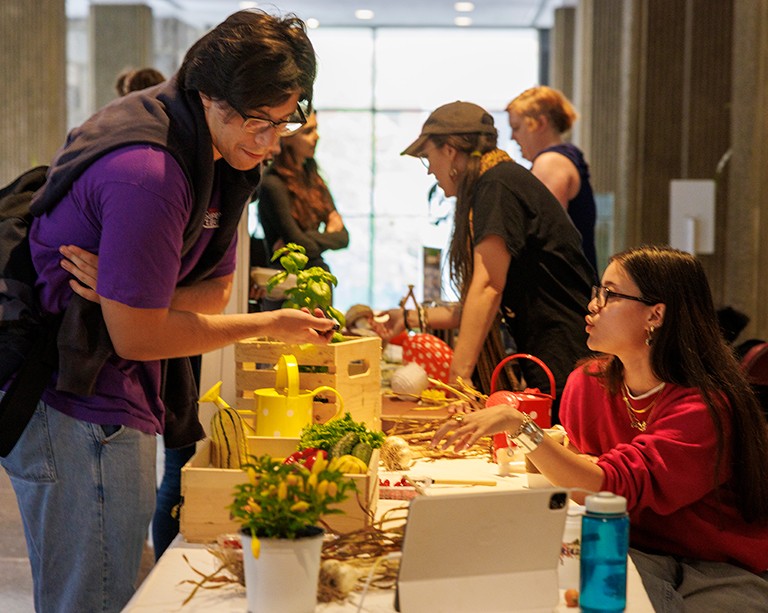NEW RESEARCH: How to reduce roadkill

Hundreds of millions of animals are killed every year by road traffic.
It’s a sad statistic that Jochen Jaeger, associate professor of geography in Concordia’s Faculty of Arts and Science, and his international colleagues hope to reduce.
But rather than focus on a specific location, as most studies do, they’ve taken a less common approach.
Jaeger and an international team of collaborators stepped back to re-examine the results of dozens of studies already conducted in countries around the world — all they could possibly find in the peer-reviewed and grey literature.
They combined the data from many studies and analyzed them together, which allows for the discovery of more general relationships that hold across many locations. They focused on what prevention methods are most consistently useful. The results were recently published in the journal PLoS ONE.
Of the more than 40 prevention methods available, the researchers found that, overall, fences, with or without crossing structures, reduce roadkill by 54 per cent, when considering all species combined. Crossing structures had no detectable effect without fencing.
When large mammals were examined, the combination of fences and crossing structures led to a roadkill reduction of 83 per cent, while animal detection systems (such as laser tripwires or radar), led to a 57 per cent reduction.
The study also determined that expensive measures were much more effective than cheaper ones.
“Inexpensive measures such as wildlife reflectors should not be used until and unless their effectiveness is tested using a high-quality experimental approach,” Jaeger says.
 The highly endangered Iberian lynx are particularly at risk of road mortality.
The highly endangered Iberian lynx are particularly at risk of road mortality.
‘A tsunami of roads’
Equally important in this study is its potential to improve the quality and consistency of future research. The 50 roadkill studies that Jaeger and his colleagues looked at (some with multiple data sets) were the only comparable ones out of 1,274 available worldwide to date.
At the top of the team’s list of recommendations regarding research methods is the need to establish a clearer picture of how often animals get killed when they cross before preventative measures are installed.
The researchers also suggest reporting more carefully on how animals fare at “hotspots” at the end of fencing stretches. Many animals seem to move along the fence, cross the road at the end and get killed there. A different design of the fence-ends could help reduce this effect, but research about this idea still needs to be done in the future.
Another priority they named was increasing the duration of studies to a minimum of four years for Before-After study designs, and a minimum of either four years or four sites for Before-After-Control-Impact study designs.
Jaeger emphasizes that establishing a minimum quality for the approaches taken is increasingly important as the world builds more and more roads and species become rapidly more at risk. He points to Brazil and India as examples of where the roadkill problem promises to increase dramatically.
“There will be a huge number of road projects going through the Amazon very soon. They will have large numbers of animals being killed. It's like a tsunami of roads,” Jaeger says.
“Somewhere like Switzerland or Germany — they pretty much have all the roads they will ever build. But in Brazil and many other countries, most roads are still being constructed.”
Jaeger emphasizes that places like the Amazon urgently need mitigation measures to protect the biodiversity that is still there, but better wildlife mitigation is also needed here at home.
Crucial, then, is the need to make sure that future studies are not only rigorous and make their results available to other researchers, but are comparable with other studies.
“If we do another 1,000 studies and only 50 of them can be included in the next meta-analysis in 10 years, that would be a huge missed opportunity,” he says.
“Rather, we should do them in a way that they can all be part of the next meta-analysis.”
Impact assessment conference
From April 4-7, Jaeger will take part in the 37th annual conference of the International Association for Impact Assessment, held this year in Montreal. He is co-chairing a session with Aurora Torres (Museo Nacional de Ciencias Naturales) about creating an international coordinated network that engages scientists and practitioners to assess the impact of human infrastructure on wildlife globally, and inspire innovative ideas and applications.
Jaeger will also be joined by students from Concordia’s Master’s in Environmental Assessment, who have organized a special session on Impact Assessment.
Read the cited study.


